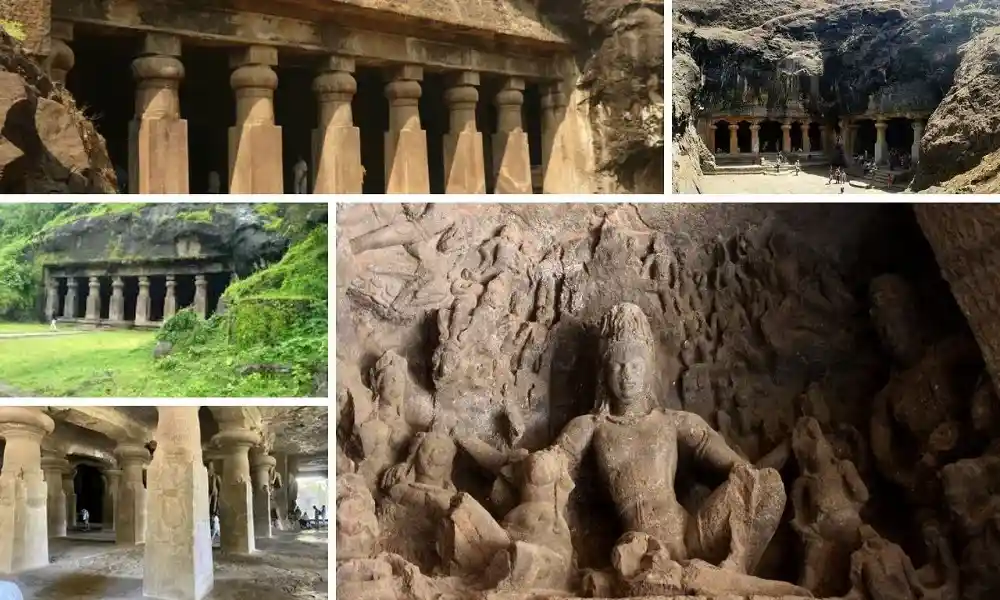Last Updated on 24/04/2025
The Elephanta Caves, one of the most visited tourist destinations in India, are located in Mumbai, the industrial capital of the Indian subcontinent. The island of Elephanta is approximately 10 km away from the Gateway of India in Mumbai. The Elephanta Caves are one of the best creations of Indian art and architecture. The meticulously crafted rock-cut caves are a jewel of Indian tourism. According to leading historians, there was a statue of an elephant near the coast of the island, and therefore, it was named Elephanta Island by the Portuguese settlers in India.
- Location: 10 km from Gateway of India, Mumbai.
- History: Rock-cut caves from the 5th to 8th century, dedicated to Lord Shiva.
- Main Attraction: Iconic 20-foot Trimurti sculpture of Shiva.
- Access: Reachable by ferry, open 9:00 AM – 5:00 PM.
- UNESCO Site: Listed as a UNESCO World Heritage Site.

The Elephanta Caves, in the state of Maharashtra, are one of the most celebrated and marvelous historical tourist destinations. The caves consist of splendid temples dedicated to Lord Shiva. Historical accounts narrate the stories of the great warrior Prince Pulakesin II of the Chalukya Dynasty to celebrate his victory. The Elephanta Caves are an exemplar of rock-cut architecture, with some of the most fabulous and magnificent megaliths carved into wondrous human figurines and animal profiles. The spectacular cave architecture and exquisite friezes on the ceilings are simply inimitable.
The main area lies at the western end of the caves, which is considered to be the resting abode of the ‘Linga’, where Lord Shiva is worshipped as the God of potency and proliferation. Different frescoes, beautifully arranged one after the other, show all the holy incarnations of Lord Shiva. The temple is planned with sheer geometric arrangements that leave you in awe. The entire rock-cut process was a gradual, cumbersome shift and movement of rocks. Some of the rocks have a refined surface, while others remain untouched. The entire Elephanta Caves stretch over an area of about 60,000 sq ft, with a main hall, two lateral chambers, a courtyard, and numerous contributory shrines. There are three main entrances to the temple, of which the ones on the west and east sides are more important. The Sadasiva display of Shiva is located at the end of the north-south axis. The massive 20-foot-high image of the three-headed Shiva is highly imposing and is a magnum opus of great Indian art.
Tourists can visit these incredible caves from 9:00 AM to 5:00 PM and should avoid visiting during the monsoon, as the caves can be dangerous when it rains.
The origin of the Elephanta Caves dates back to the ancient times of the Konkani Mauryas, and they were then known as Gharapuri, named after a sculpture of an elephant found there. This figure was later moved to the Bhau Daji Lad Museum near Jijamata Udyan in Byculla, Mumbai.
It is very convenient to reach Mumbai, as it is one of the most important metropolitans with an excellent network of air, rail, and road transport. The Elephanta Caves are also accessible via ferries from the Gateway of India. The nearest airport is Chhatrapati Shivaji Maharaj International Airport. An India tour must include a visit to the magnificent Elephanta Caves, one of the most beautiful gifts Indian history has offered the world.


 Call
Call WhatsApp
WhatsApp Enquiry
Enquiry